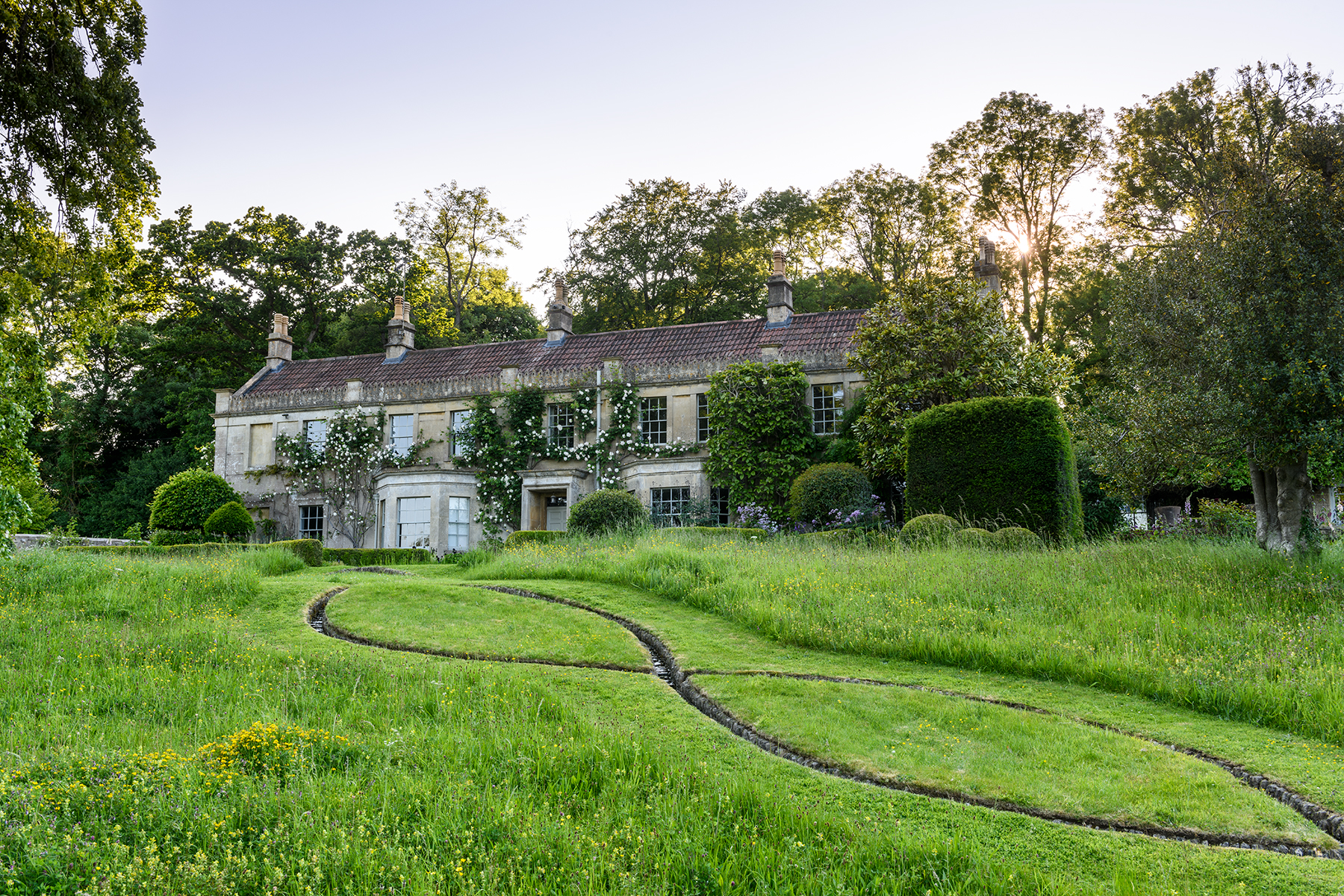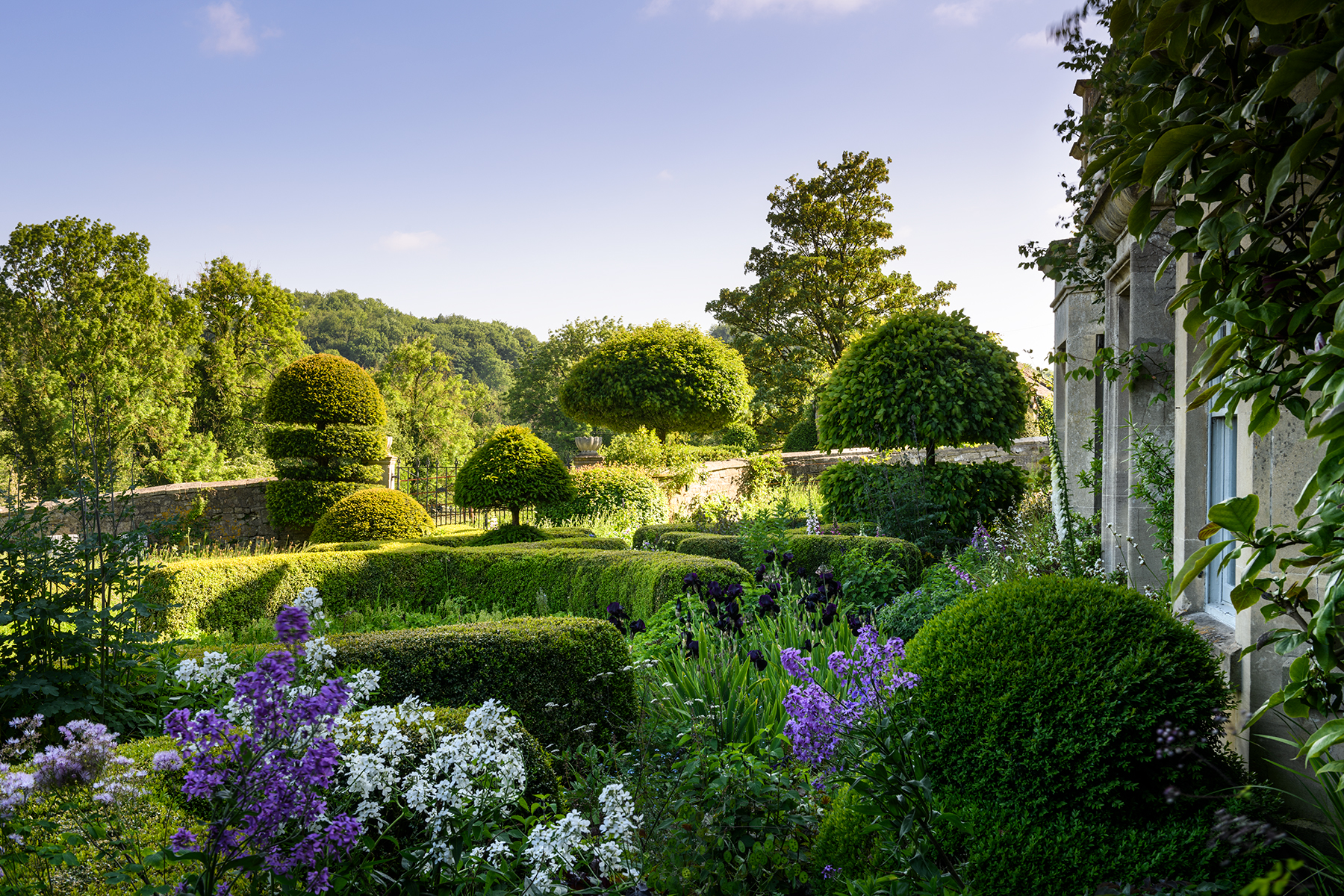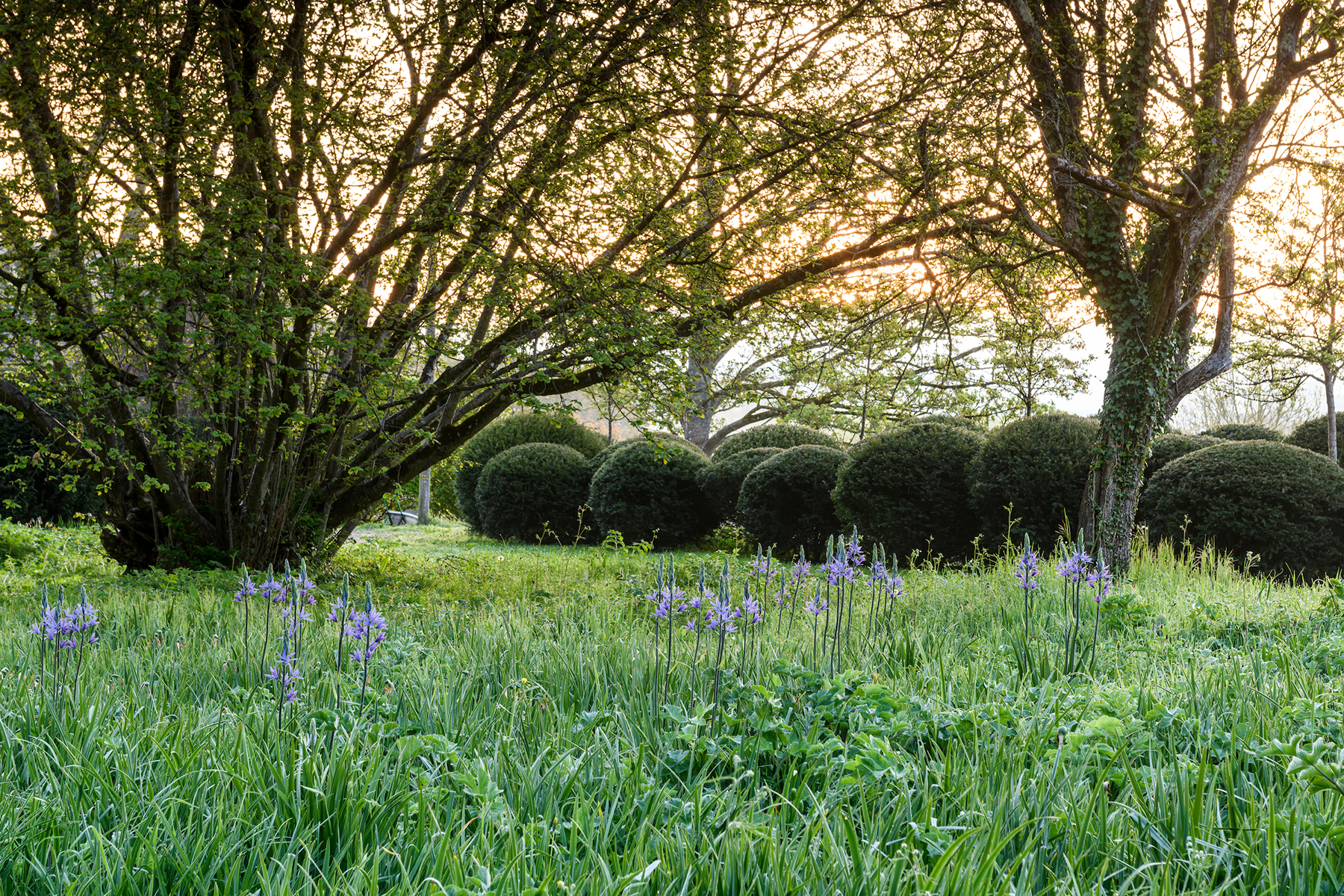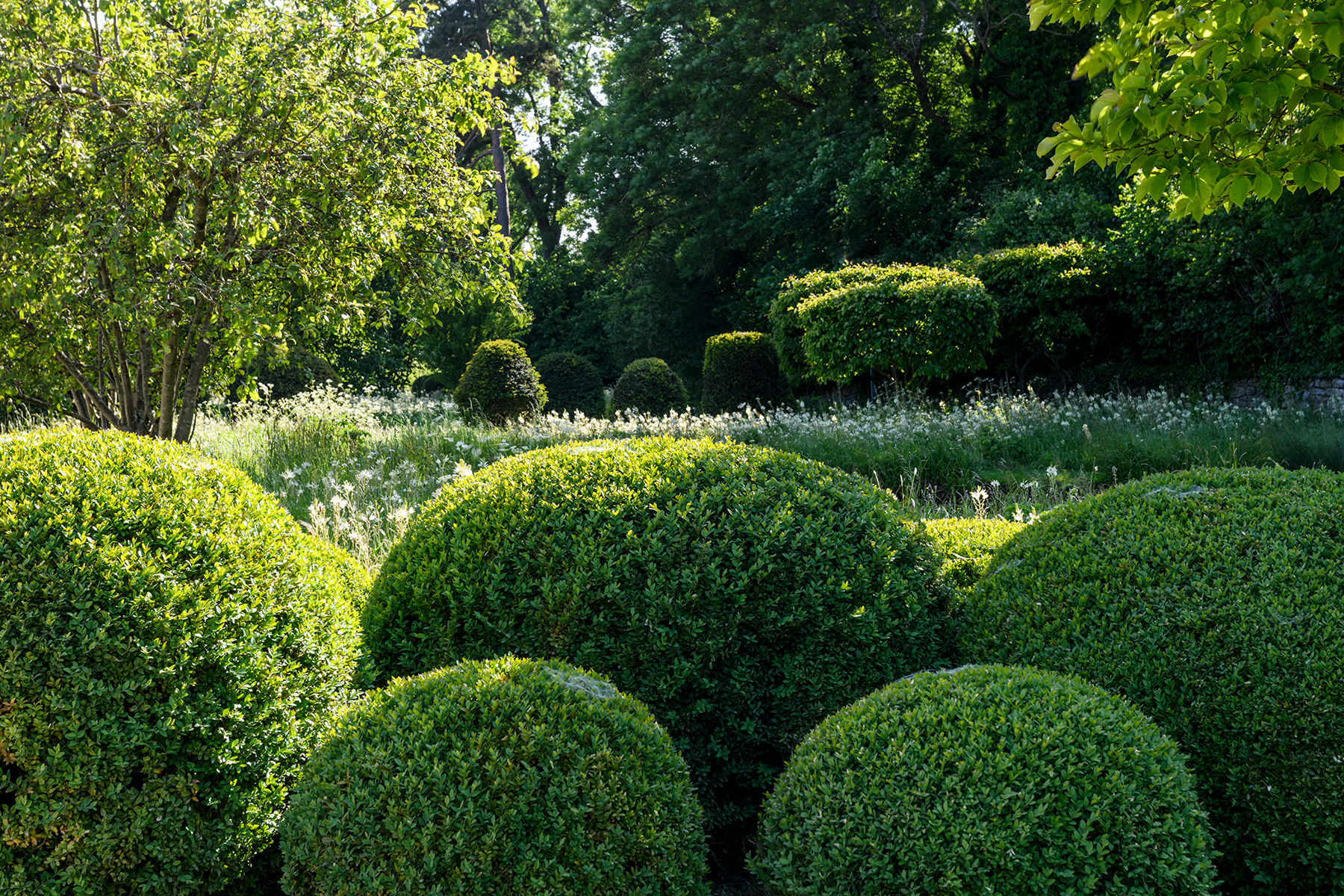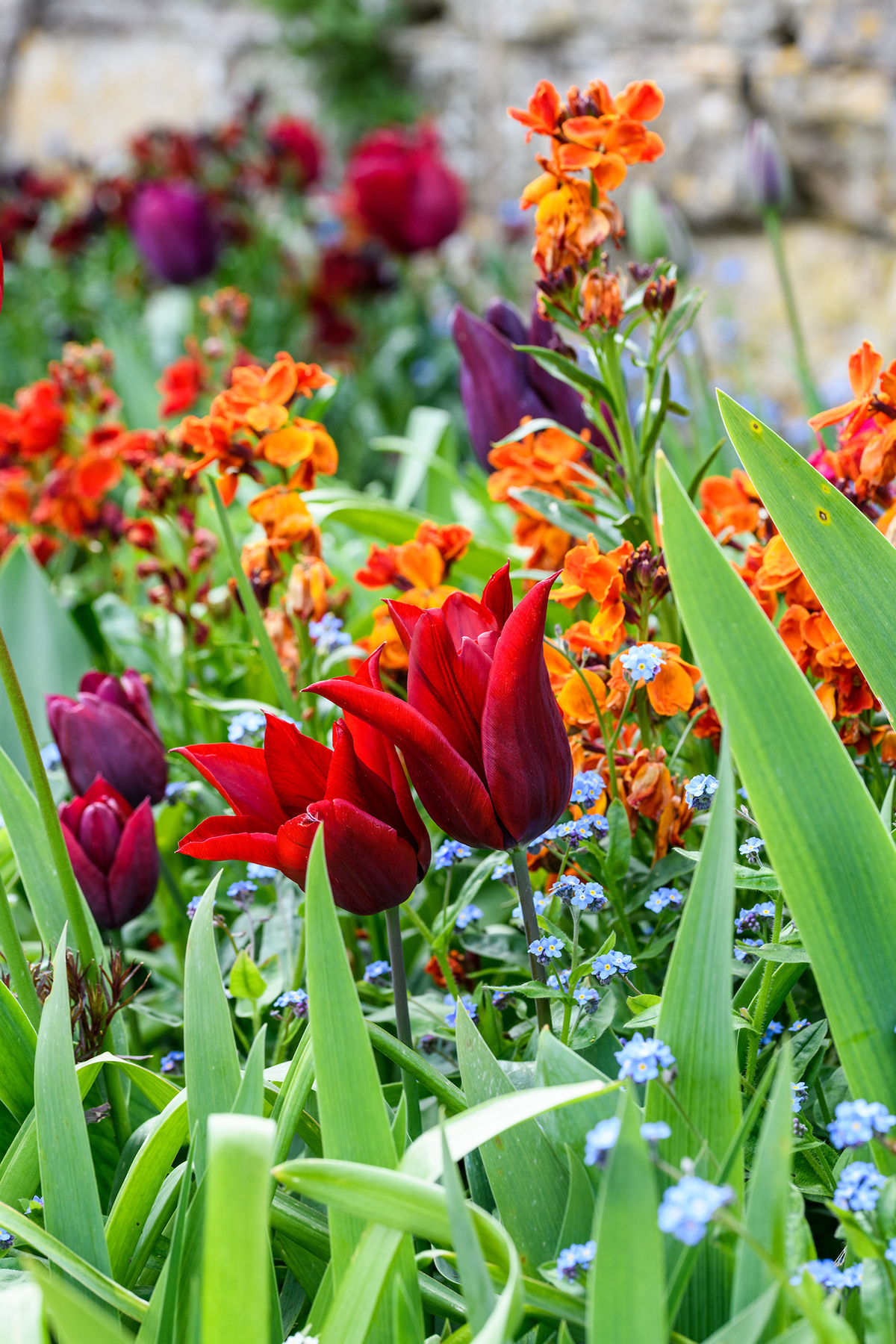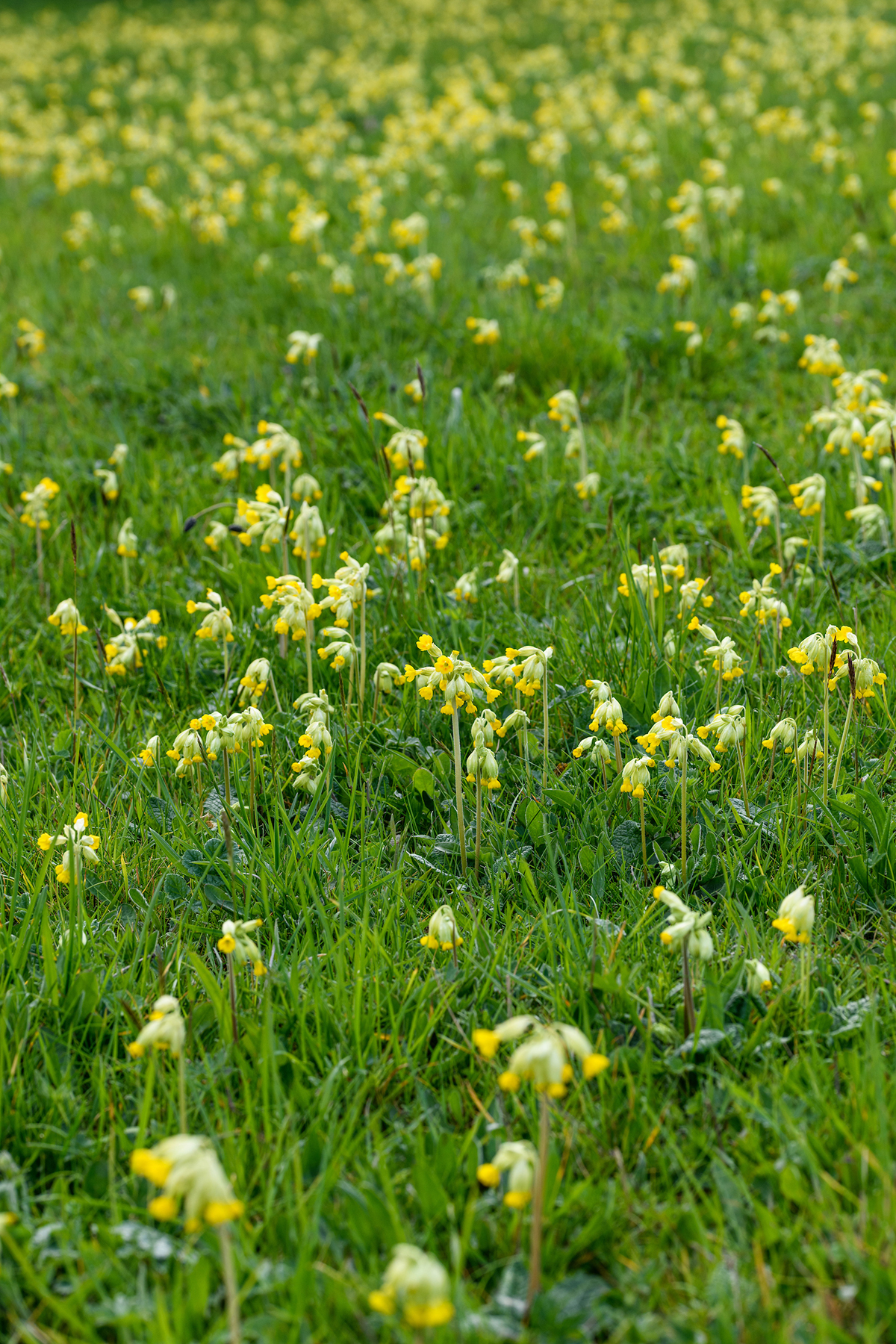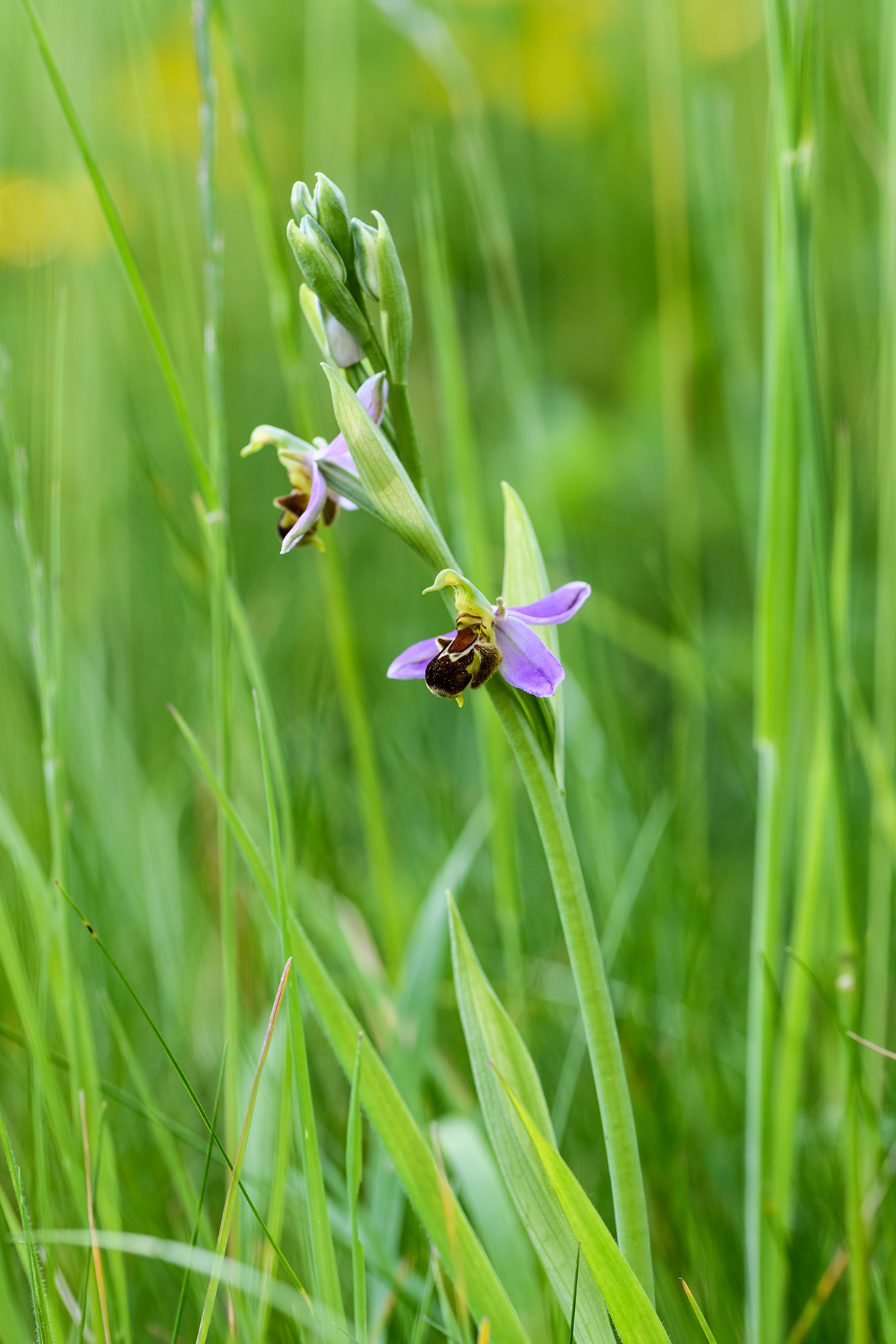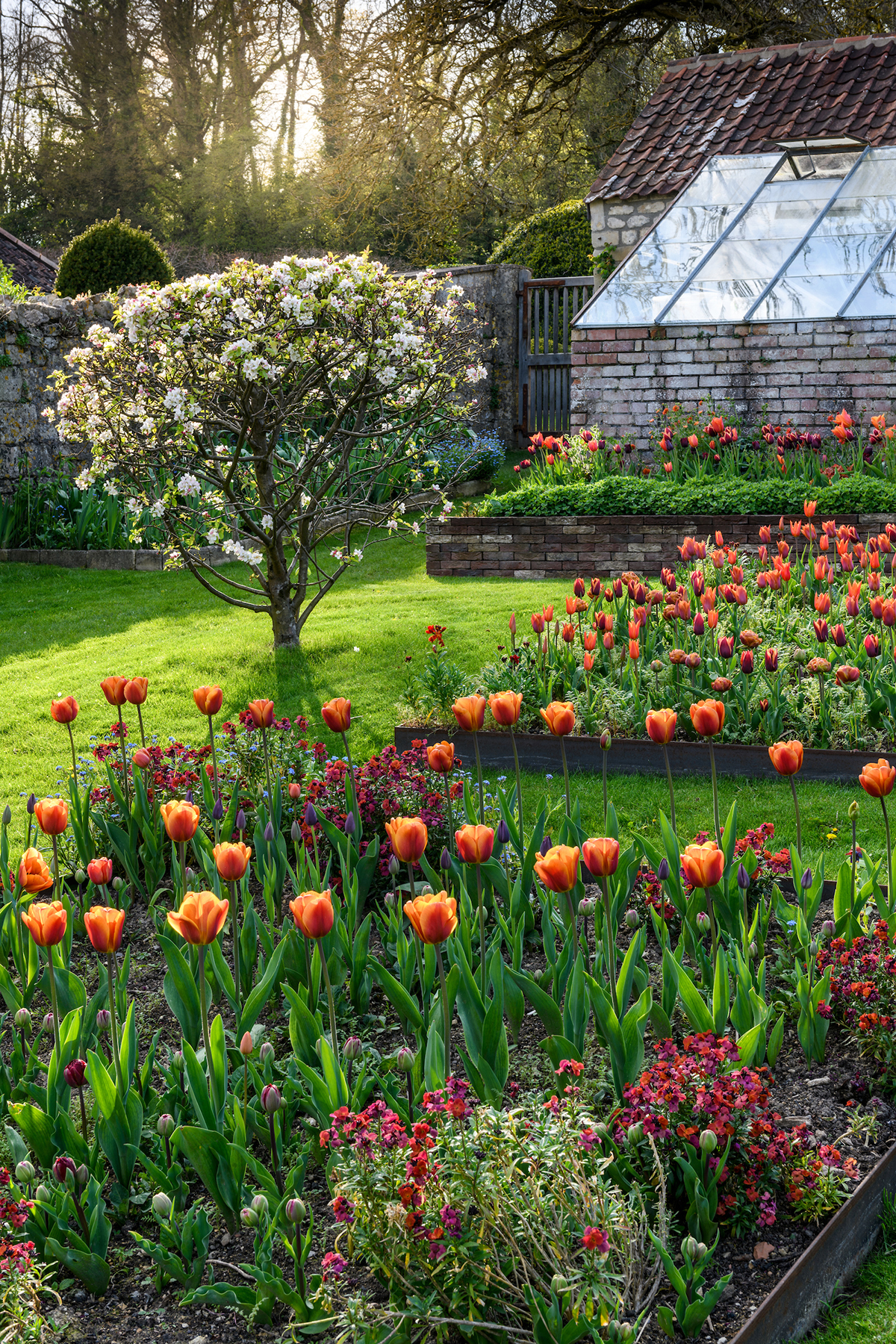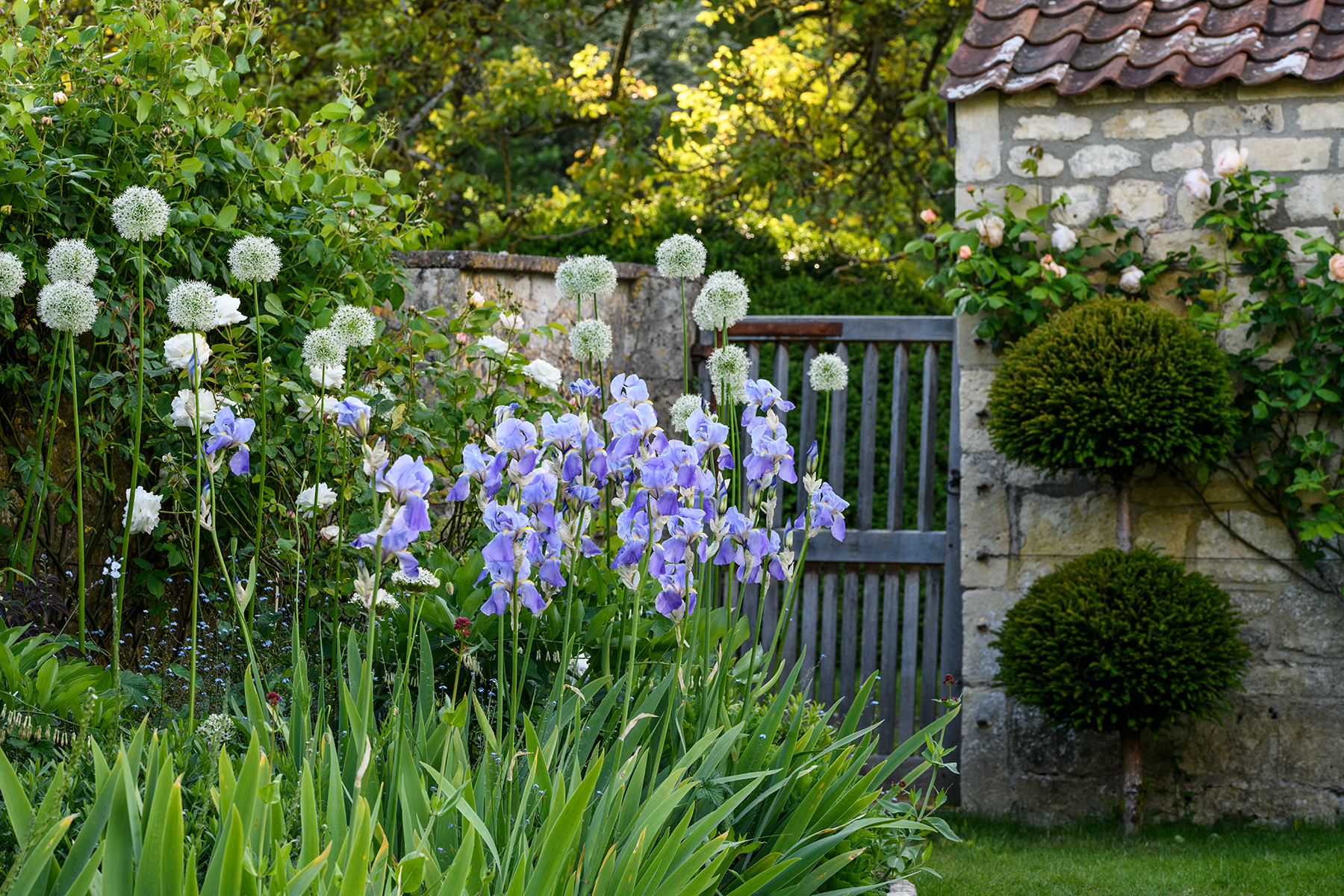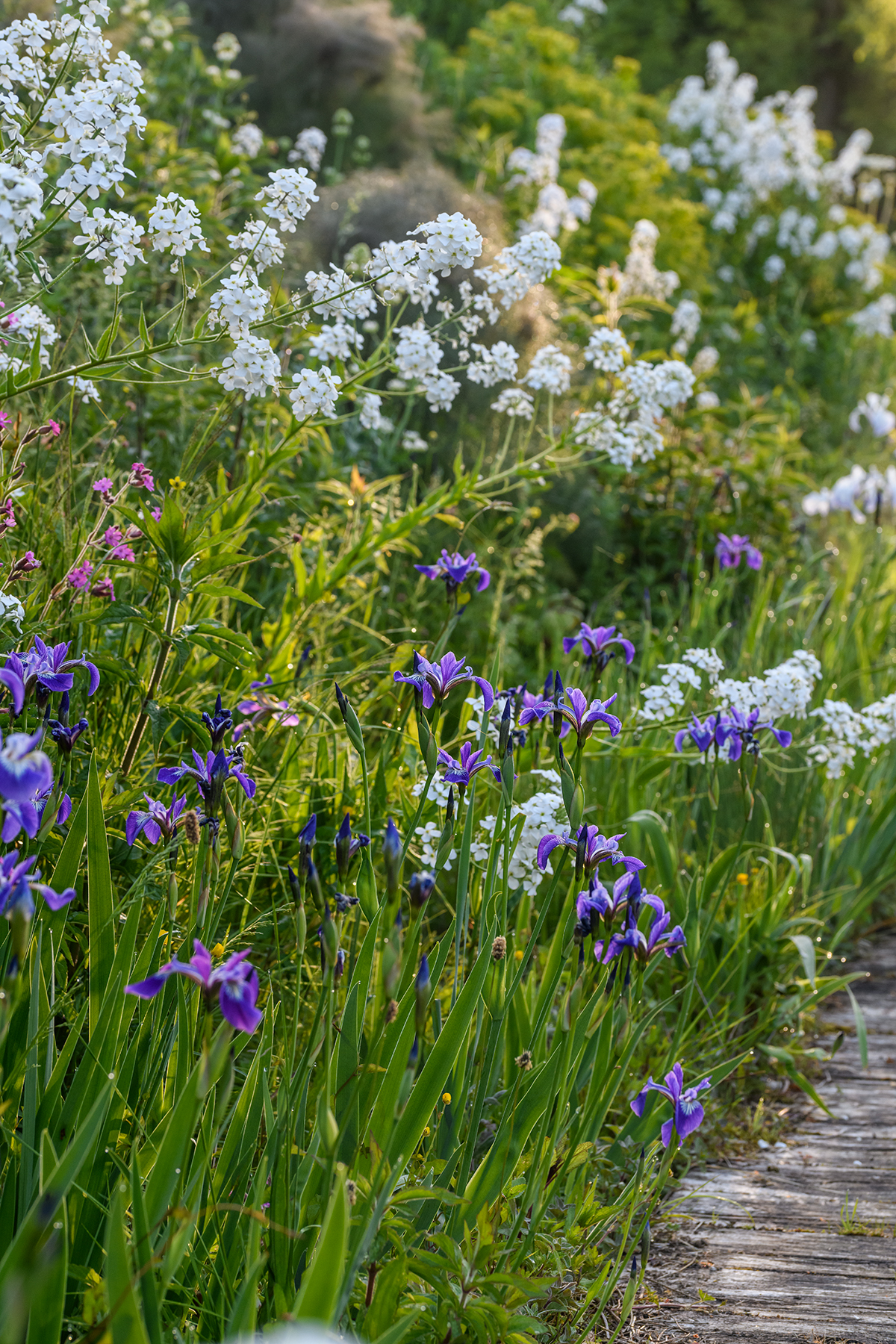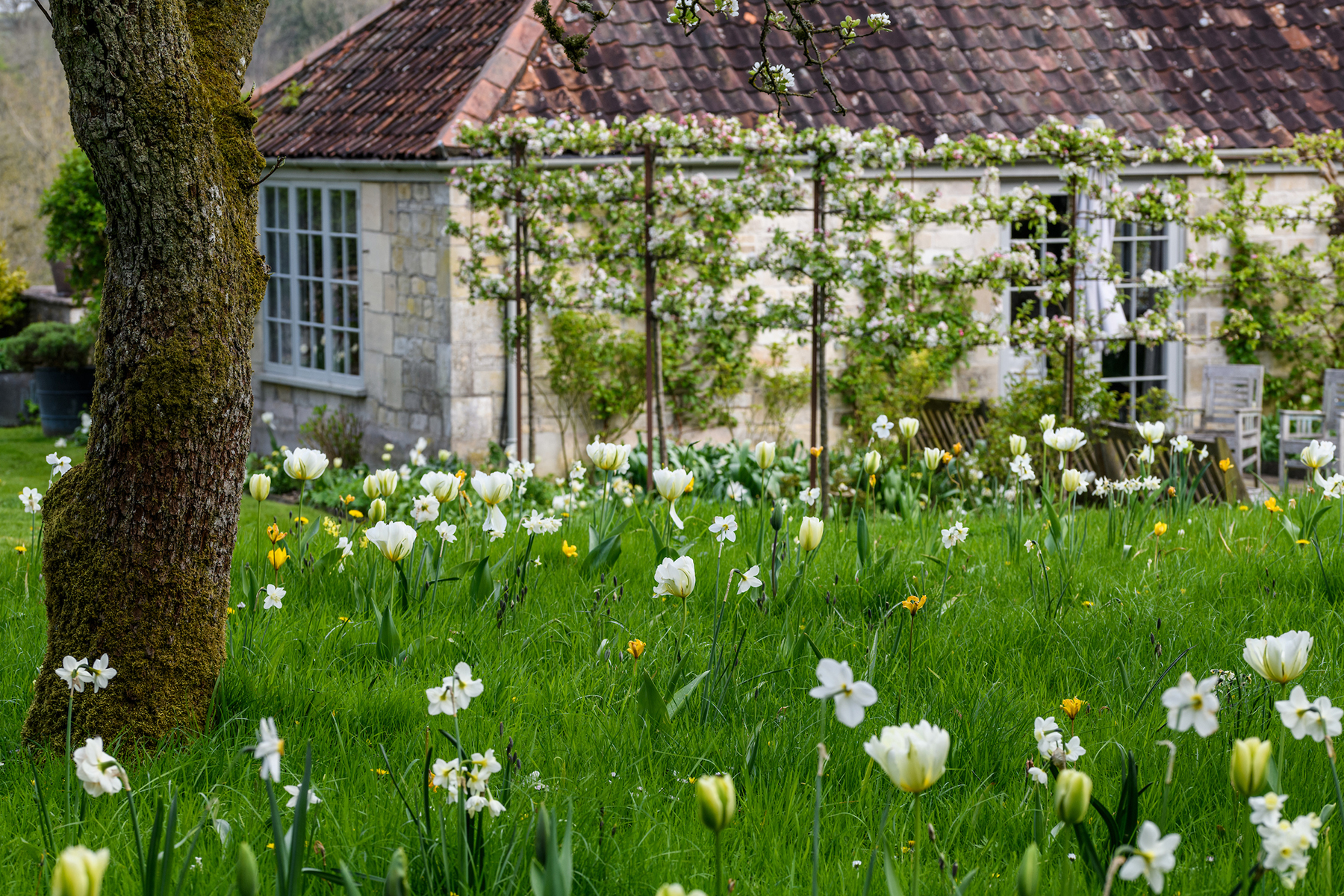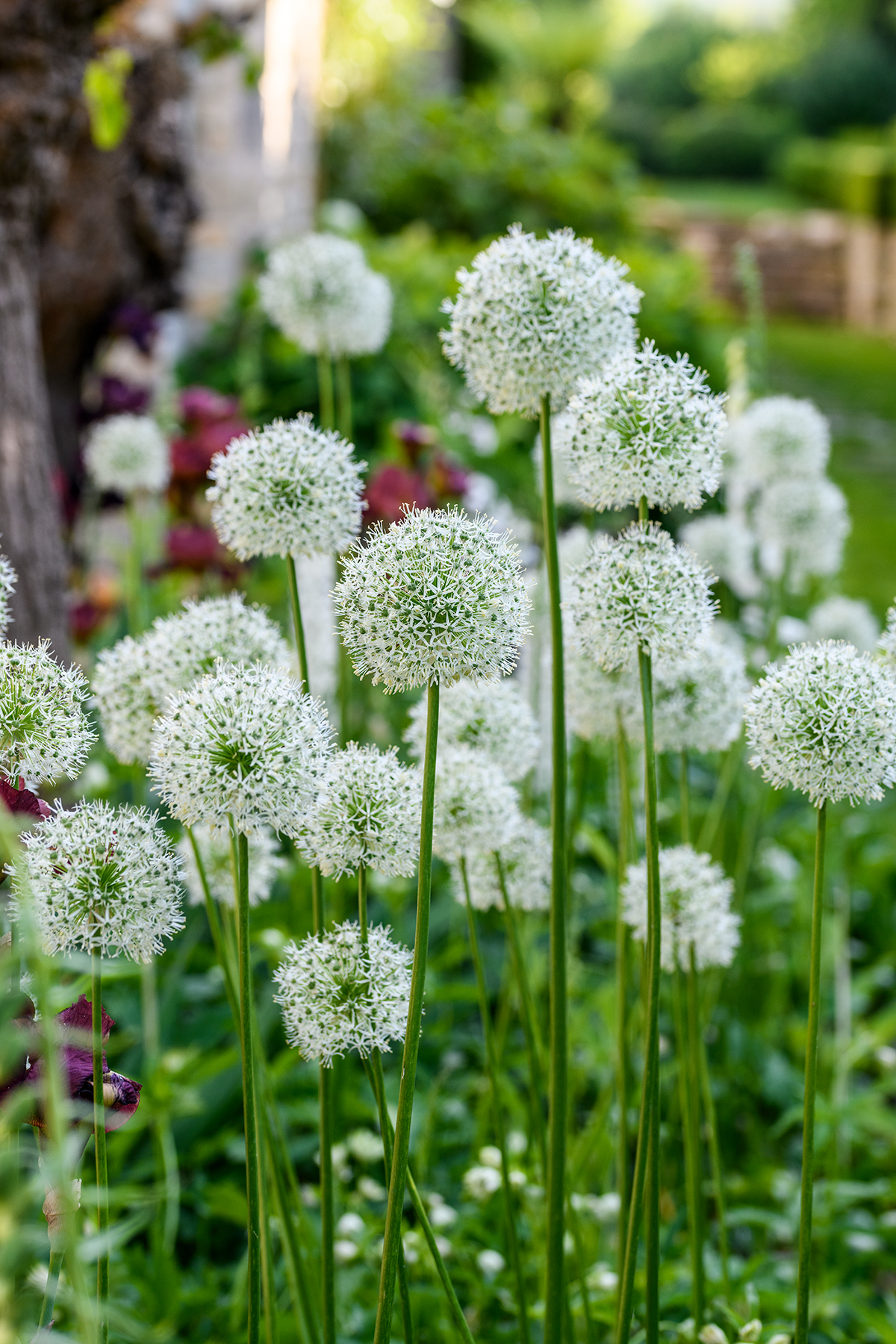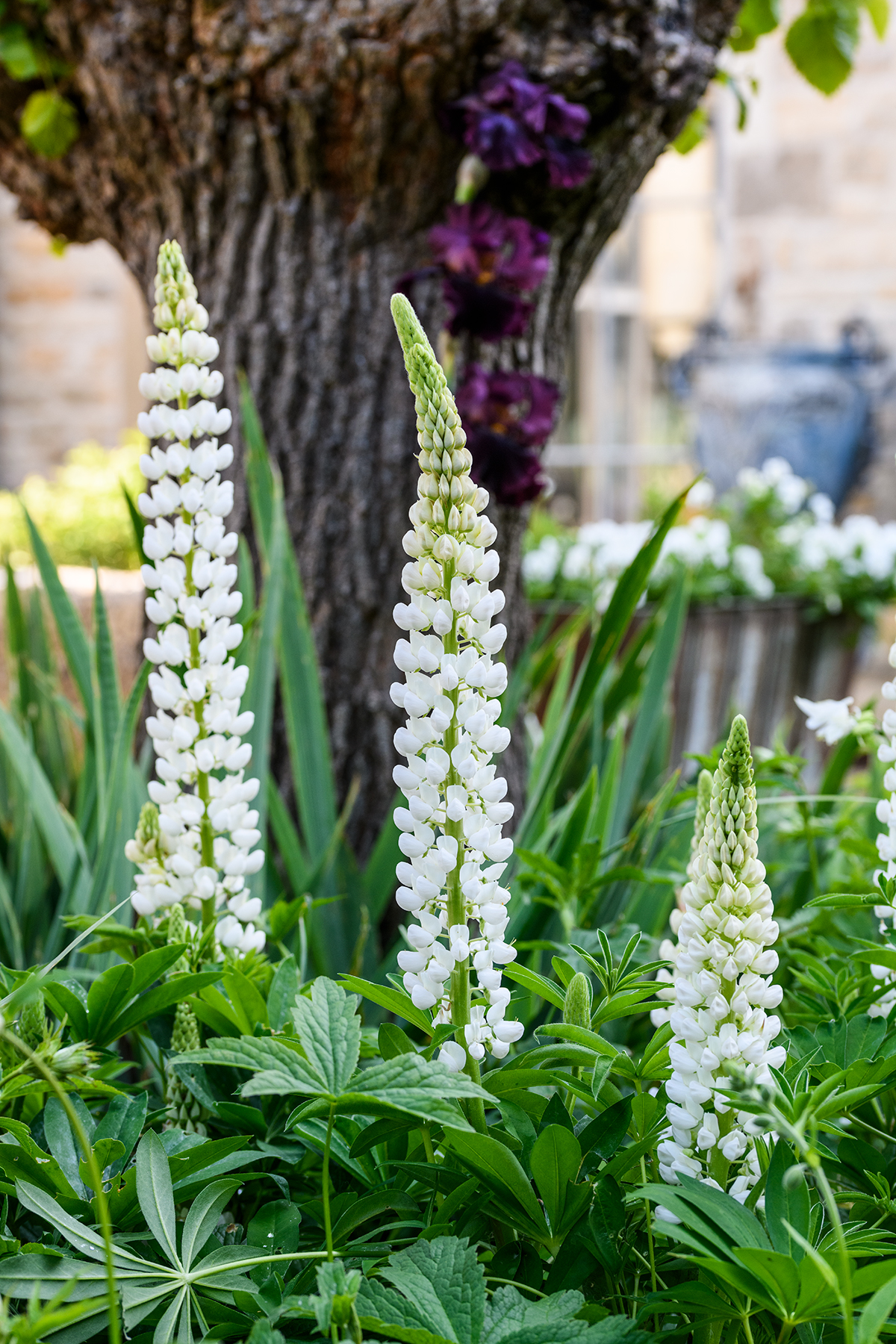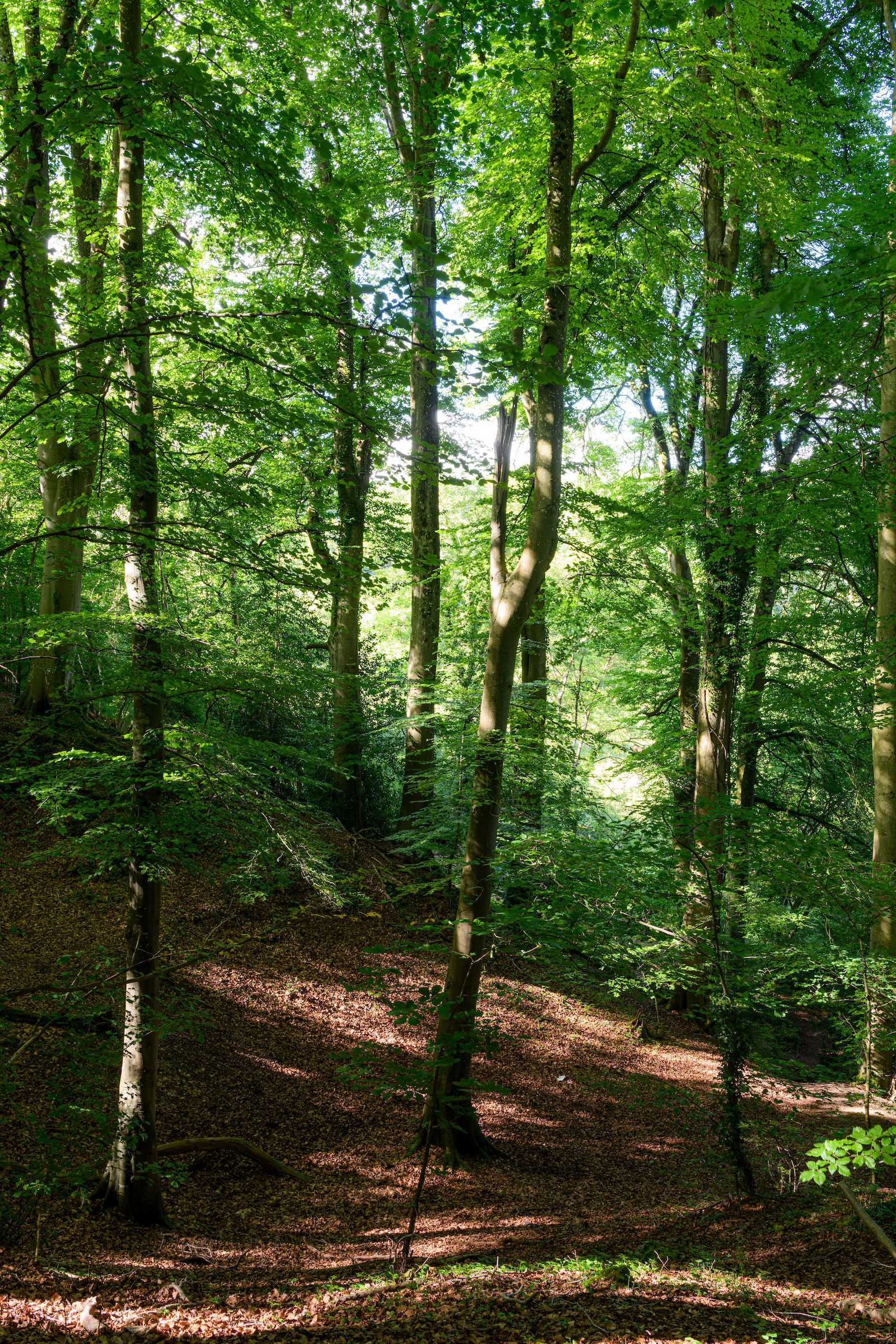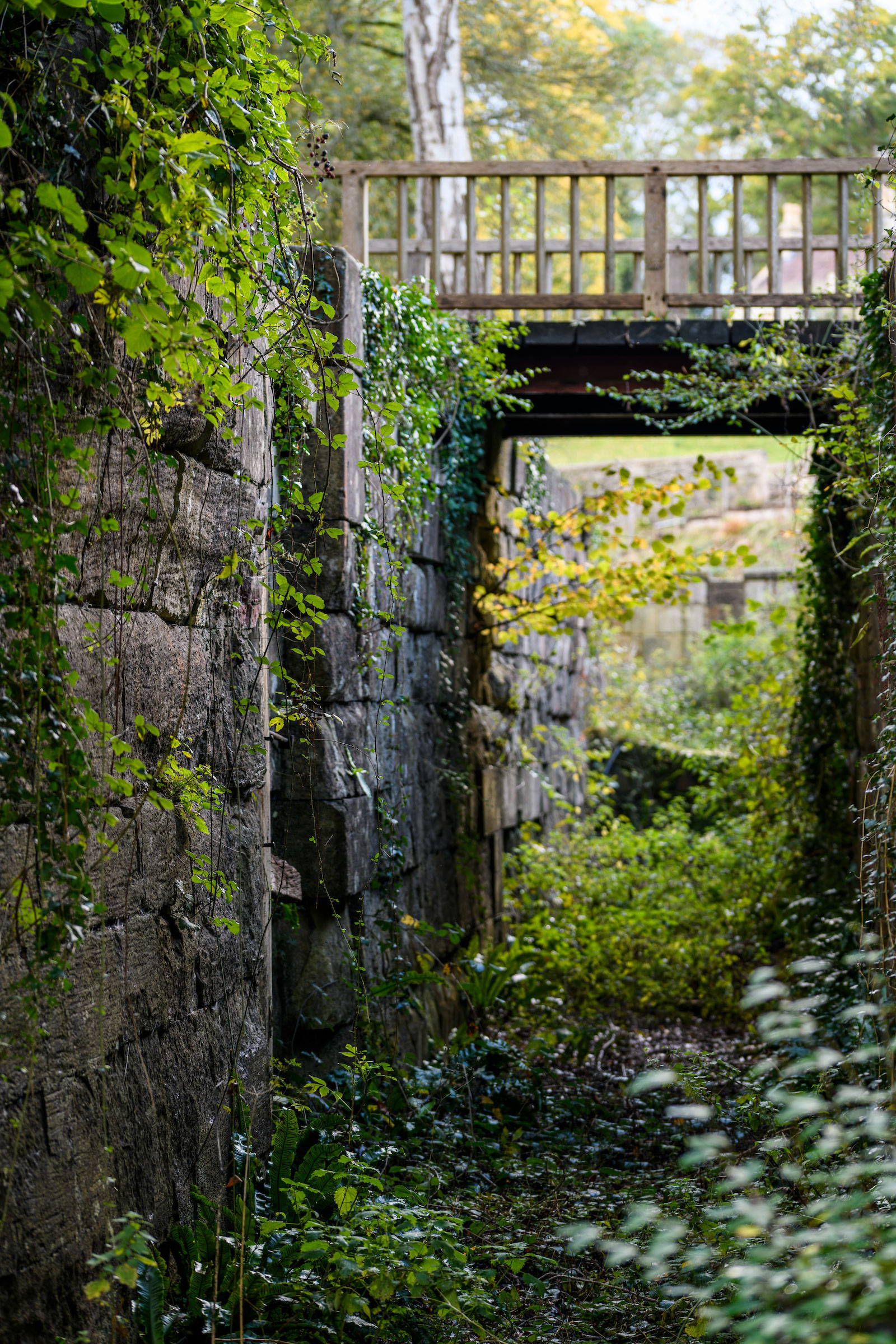Oval Pond & Rill
When we arrived, the flat area in front of the house was a gravel car park and the lawn was regularly mown.
We removed the gravel and built the oval pond and rill. The following spring, while mowing the grass, we saw a bee orchid plant. We immediately stopped summer mowing and now have, 15 years later, an incredible display of flowers enhanced by planting of spring bulbs.
There are five varieties of native orchids, primroses, cowslips, violets, fritillaries, knapweed, buttercup and so many more native flowers.
The pond now has so many newts living and breeding there, as well as the very rare freshwater pea mussel.
Round Pond & Topiary Meadow
Formed from a small portion of the canal, this has now been filled with spring water and is teeming with life. We stocked it with fish as soon the water settled and now it’s a wonderland of frogs, toads, newts and so many fish. In the summer, dragonflies and damsel flies gather, engaging in aerial combat. The heron and kingfisher are frequent visitors and we have even had water voles in residence.
Studded with yew topiary, this has a succession of spring bulbs, snowdrops, scilla, muscari, narcissi, tulip sylvestris, finishing with an abundance of camassia; firstly the blue followed by the white. The grass continues to grow long for the duration of the summer with wild carrot, oxeye daisy, yellow rattle and cut paths meander through.
Long Border
Flanking the path to the walled garden, it benefits from its sheltered warm position and is a riot of rich, sensuous, saturated colour throughout the spring and summer, until the first frosts of winter.
Wildflower Meadow
Beyond the walled garden is the wildflower meadow, which has an abundant mix of orchids, buttercup, primroses, cowslip, knapweed… The list is endless.
It is an absolute joy, full of bees and butterflies and an area loved by a barn owl who quarters the field on summer’s evenings.
Walled Garden & Orchard
The shape is formed by the canal running below it, creating a glorious asymmetrical space. At the top sit the greenhouses, below which are the ornamental vegetable and cut flower beds.
The lower area is the orchard, with apple, pear, quince, damson, greengage, figs and apricots. The grass is planted with spring and summer bulbs with mown paths leading you to the sculptural bench which we use for gatherings and choral concerts.
The Pound
We dammed and lined the pound between locks 5 and 6 to form this small lake. The boardwalk and deck are built from English oak and stands on pillars in the water.
We stocked it with rudd, stickleback, crucian carp and tench. We now have swan mussels living and thriving there. We have found some as big as our hands!
The bank has so many snowdrops in February, which is a comforting reminder that spring is not far away. We love the collection of water irises that edge the boardwalk and the dark red water lilies. This has also become a habitat for fennel, euphorbia palustris, hesperis matronalis and eupatorium etc.
Cowshed & Barn
The ancient espalier pear and quince grace the front wall of the building. Underneath the old fruit trees, we have planted a rich succession of spring bulbs and perennial species tulips into the grass. A fresh zingy and zesty colour combo, as it sits close to the kitchen terrace, our haven of tranquility being white and green planting.
We are excited to see the progression of how it mingles and naturalises year after year.
Mulberry Terrace
Lined by ancient pollarded white mulberries, it is a marvellous summer sun trap and also our alfresco dining room. Mint in the old stone troughs not only keeps us well supplied with tea, but when in flower has a riot of small bees, hoverflies and butterflies.
Pots of seasonal white flowers add to the white planting in all the beds which have phlox, campanula, irises, roses, digitalis, spring bulbs etc.
Woodland Walk
We see this as the unintentional, Italian sunken garden. Steps lead you into the bed of the canal and a path leads you through locks 7 and 8, where you can marvel at the extraordinary stonework and remains of the wooden lock gates.
The moss and ferns in this area give it a very woodland feel and we have topiarised the native privet for a dramatic, architectural effect.
